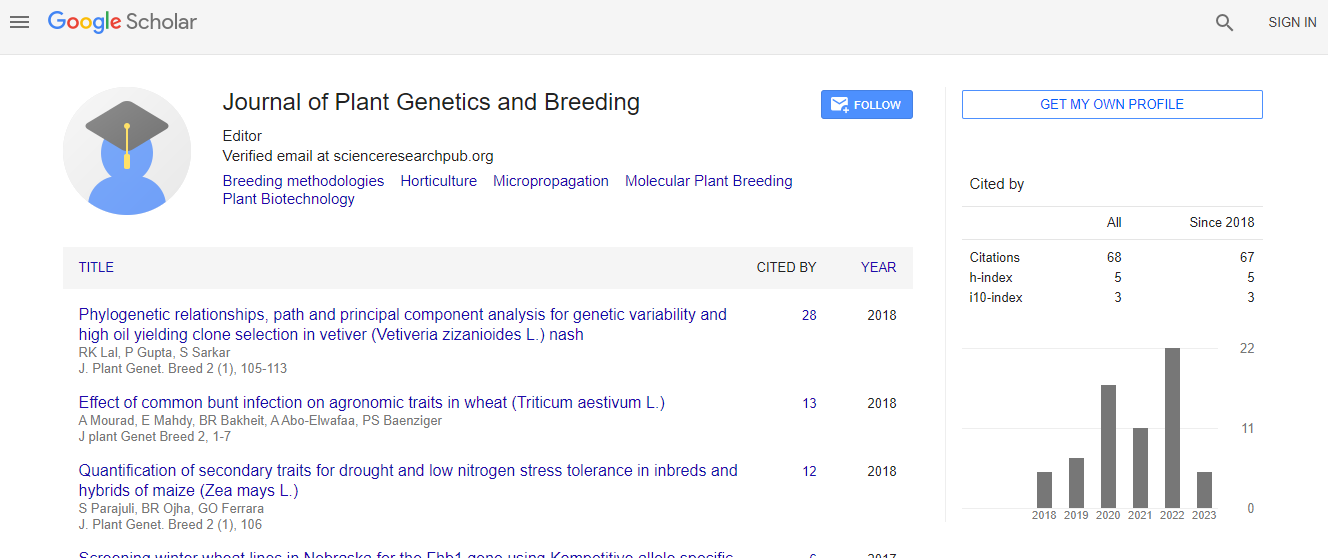Genetic Variation, Association and Marker Validation for Nitrogen use Efficiency and their Related Traits in Recombinant Inbred Lines of Rice (Oryza sativa L.)
*Corresponding Author: Boranayaka M B, Department of Agriculture, University of Agricultural Sciences, Raichur, India, Email: mbboranayak@gmail.comReceived Date: Apr 29, 2020 / Published Date: Aug 11, 2023
Citation: Boranayaka MB, Lokesha R, Latha HC and Patil R (2023) Genetic Variation, Association and Marker Validation for Nitrogen use Efficiency and their Related Traits in Recombinant Inbred Lines of Rice (Oryza sativa L.). J Plant Genet Breed 7: 165.DOI: 10.4172/jpgb.1000165
Copyright: © 2023 Boranayaka MB, et al. This is an open-access article distributed under the terms of the Creative Commons Attribution License, which permits unrestricted use, distribution and reproduction in any medium, provided the original author and source are credited.
Abstract
Rice is a nutritionally important cereal crop and staple food of Asia. There is an urgent need for developing highyielding, nutritious, resource use-efficient and multi-stress-tolerant rice varieties to keep up with the tremendous human population growth, especially in Asia, where rice remains the primary source of caloric intake. In this study, an attempt was made to establish the genotype-phenotype association involving SSR markers and eight parameters. Based on the phenotypic values of the parents, it is evident that WAB450 is more efficient in N uptake and use compared to Swarna. The inter-correlation analysis among the parameters indicated the association of Grain Yield (GY) with Dry Matter Production (DMP), Grain N Uptake (GNUP), Straw N Uptake (SNUP), N Use Efficiency (NUE) and N Translocation Efficiency (NTE). The results also indicated that number of SSR markers associated with phenotypic traits identified through one-way ANOVA were common for the correlated traits. The marker RM519 was associated with GY and SPAD value. RM340 was found to be associated with NUE and NTE and also the marker RM245 found to be associated with NUE and SPAD value. The detection of common marker(s) for the above mentioned parameters suggested that correlated traits might be influenced by common chromosomal regions. These observations suggest the possibilities for simultaneous improvement of GY and NUE.

